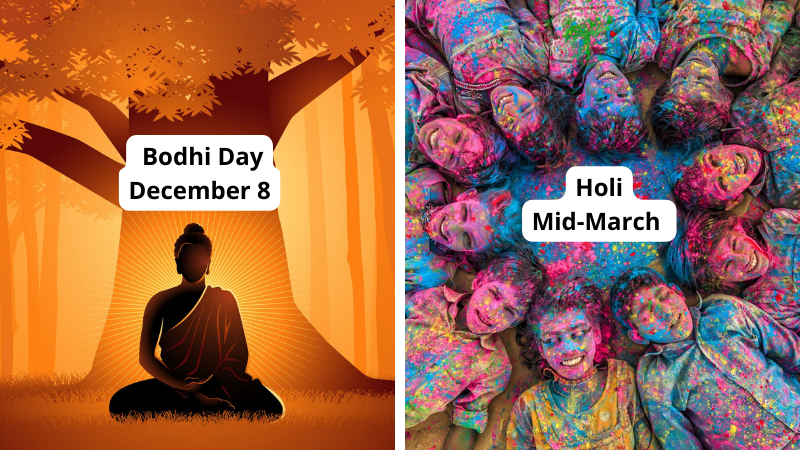The world is a big place filled with many wonderful traditions. We can help strengthen our global community by bringing those rich and diverse celebrations into our classrooms and teaching students about holidays around the world. When is Diwali? What happens during Chuseok? Your students will have a blast learning about holidays around world, and you can make the lesson even more memorable by incorporating one of the corresponding hands-on activities!
Winter Holidays
Bodhi Day

When: December 8
To honor Buddha’s enlightenment under a bodhi tree, Buddhists dedicate this day (which some observe in May or June, depending on the region) to meditation, chanting, performing acts of kindness, and gathering together to read while sharing treats and tea.
Video to watch: Bodhi Day Meditation for Kids from Miami Children’s Museum on YouTube
St. Lucia Day
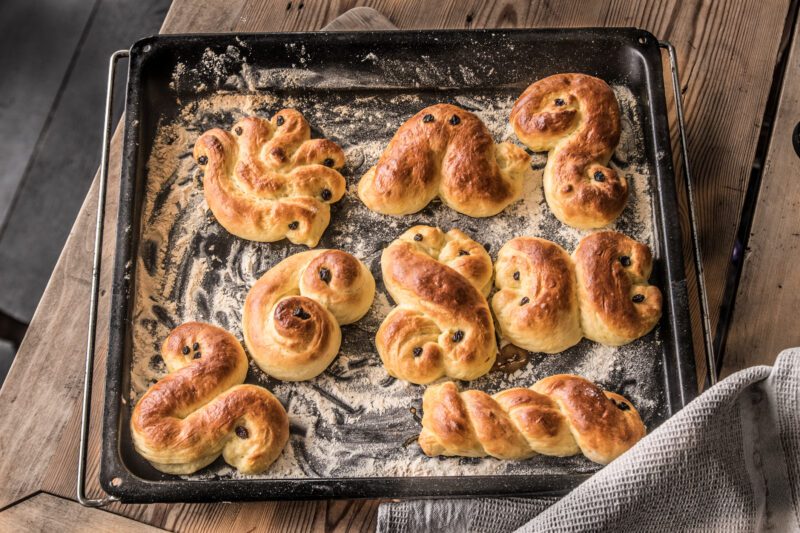
When: December 13
The oldest daughter in Swedish households actually lights up a room during this sweet holiday. During St. Lucia Day, the eldest girl in the family is given a lovely white dress and illuminated crown to wear as she serves special foods to her family. Boys are also welcome to dress up in white and sing along during parades.
Activities to try: Santa Lucia Day Activities, Free Printables and More! from Every Star Is Different
Hanukkah
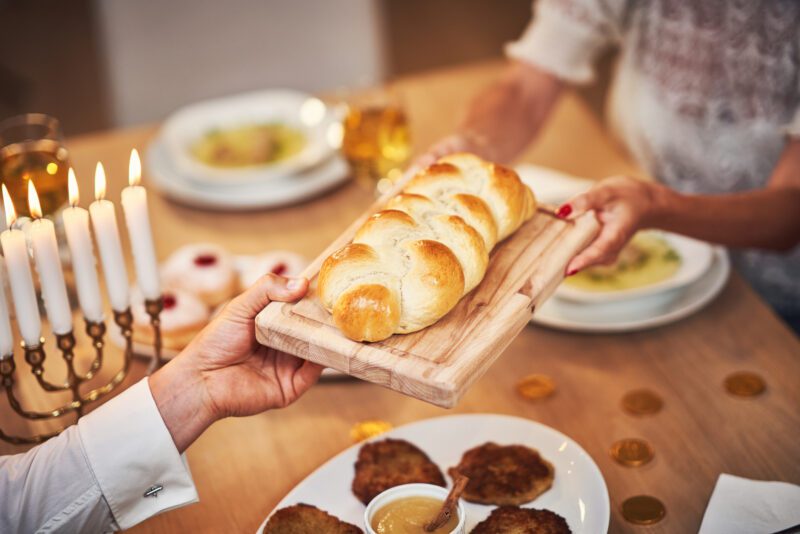
When: Late November/December
For eight days and nights, Hanukkah is celebrated by lighting candles, singing songs, and spinning dreidels among other joyous traditions. During this holiday, Jewish people honor the defeat of King Antiochus, who forbade Jews from practicing their religion.
Books to read: Our Favorite Hanukkah, Kwanazaa, and Christmas Books To Read from WeAreTeachers
Christmas

When: December 25
On December 25, Christians celebrate Christmas, one of the most popular holidays around the world. Christmas honors the birth of Jesus Christ, who is the son of God according to Christian faith. The name is a joining of “Christ” and “mass,” which refers to the holy mass (supper, festival, or celebration) of Christ.
Activities to try: Christmas Activities for Kids from ABCDee Learning
Boxing Day
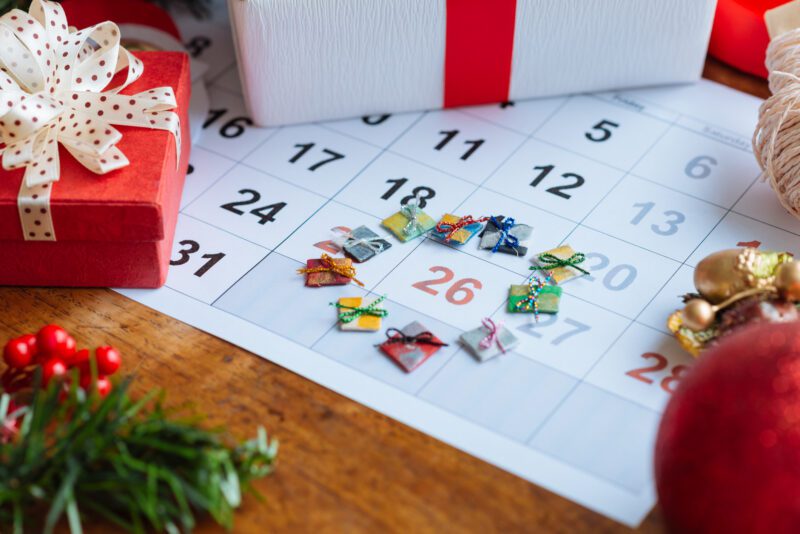
When: December 26
The day after Christmas is among the special holidays around the world. In England, for example, a tradition began when wealthy people offered gifts and food to their employees after Christmas. Today, along with countries like Canada and Hong Kong, it’s evolved into a shopping holiday best known for deep discounts and big sales at retail stores.
Video to watch: What Is Boxing Day? from National Geographic on YouTube
Kwanzaa

When: December 26 to January 1
From December 26 through January 1, Kwanzaa is observed by African Americans. The holiday celebrates African heritage through the gathering of friends and family, who feast, exchange gifts, and light black, red, and green candles.
Activities to try: Kwanzaa Crafts and Activities for Kids from Artsy Craftsy Mom
Omisoka

When: December 31
On Japanese New Year, or Omisoka, many rituals are performed to prepare for the start of the new year. One such ritual, Osoji, includes removing clutter and deep-cleaning homes to purify them before the next year begins. Then, a special traditional dinner is enjoyed at home with friends and family before sitting down to watch Kohaku Uta Gassen, a nationwide talent competition. Late in the evening, long noodles called toshikoshi soba are served in the belief that they can extend one’s life. Finally, at midnight people gather at temples for Joya-no-kane, the ringing of the bells to welcome a new year.
Video to watch: Omisoka Craft and Activities from Redwood City Public Library on YouTube
Junkanoo

When: December 26 and January 1
In the Bahamas, people take to the streets to enjoy Junkanoo, a massively popular street festival that originates from the 18th century when slaves would celebrate being given three days off for Christmas. Today, the event takes place on December 26 and January 1 with a parade, elaborate costumes, dance troupes, and live music.
Activity to try: Junkanoo Activity from Deliberate Travel
Lunar New Year
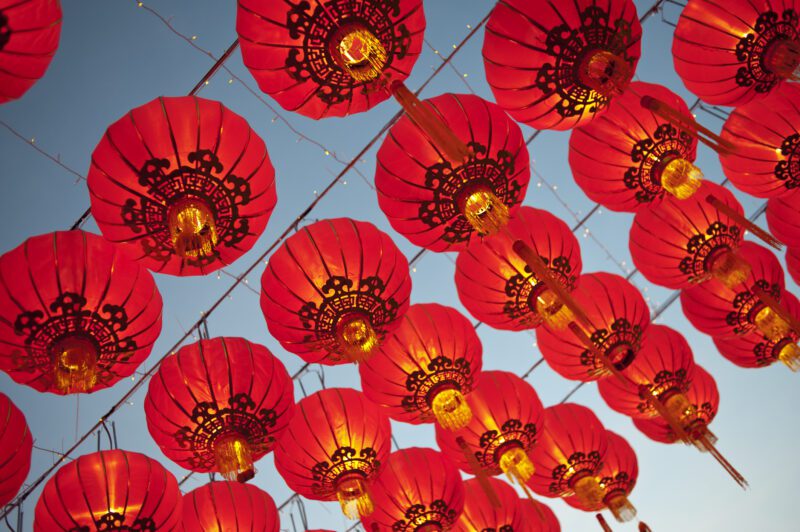
When: Late January, early February
While many may know it as Chinese New Year, the inclusive Lunar New Year is more appropriate as this celebration takes place throughout many different countries. During this time of year, Asian nations observe their own unique, regional traditions including wearing red, decorating the home in red and gold, and exchanging red envelopes filled with money as a symbol of good luck and prosperity. Lunar New Year is one of the most important holidays around the world for the more than 1 billion people who celebrate it.
Activities to try: Our Favorite Lunar New Year Activities from WeAreTeachers
Valentine’s Day

When: February 14
Celebrated since at least the 1300s, Valentine’s Day originally honored two Roman saints who were named Valentine on February 14. The date is also tied to an old European legend about birds pairing off to start new families. Today, loved ones mark the day by exchanging heartfelt cards, candy, flowers, and other gifts often given in red heart-shaped boxes.
Read this: Heartwarming Valentine’s Day Poems for Kids from WeAreTeachers
Hinamatsuri

When: March 3
During Japan’s 1,000-year-old Hinamatsuri festival, girls are celebrated through the display of special dolls and family meals that include sticky rice cakes wrapped in pickled cherry blossom (with a few placed alongside the dolls too!).
Activity to try: DIY Japanese Fans for Girls’ Day (Hinamatsuri) from Raising Veggie Lovers
St. Patrick’s Day

When: March 17
In honor of the man who brought Christianity to Ireland, St. Patrick’s Day is one of the holidays that’s celebrated all around the world. The festivities usually include wearing green, eating corned beef and cabbage, hunting for shamrocks, and attending large parades.
Activities to try: Awesome St. Patrick’s Day Activities for Your Classroom from WeAreTeachers
Spring Holidays
Baba Marta
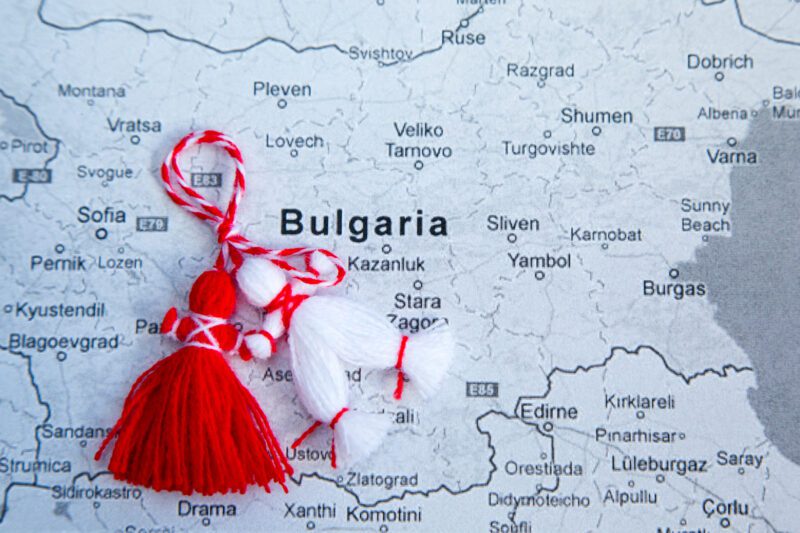
When: March 1
In Bulgaria, Baba Marta, or Granny March, ends the cold winter and ushers in the beginning of spring. Baba Marta is a mythical figure who brings with her the end of the cold winter and the beginning of spring. To honor and commemorate the occasion, people exchange martenitsa, red-and-white interwoven strings, to bring health and happiness during the year ahead.
Activities to try: Easy Paper Ideas for Baba Marta from Krokotak
Holi

When: Mid-March
Known as the Festival of Spring, Festival of Colours, and the Festival of Love, Holi is one of the most popular and beloved Hindu festivals. While celebrating the arrival of spring, the holiday is considered an opportunity to start over, let go of past mistakes, welcome new love, and heal broken relationships. On this special day, people light bonfires, roast corn, carry drums, and cover each other in colorful powder.
Activities to try: Amazingly Fun Holi Crafts and Activities for Kids from Artsy Craftsy Mom
Waffle Day

When: March 25
The religious Feast of the Annunciation, or Our Lady’s Day, is the inspiration for this sweet Scandinavian tradition. The original holiday is called Vårfrudagen in Swedish, but it sounds an awful lot like våffeldagen, which means “waffle day.” Over time, people in Sweden, Norway, and Denmark actually started calling it Waffle Day, sparking a shift in the celebration, which now involves eating the delicious fluffy treats.
Activities to try: Wacky Waffle Day from (Cool) Progeny
Carnival of Brazil
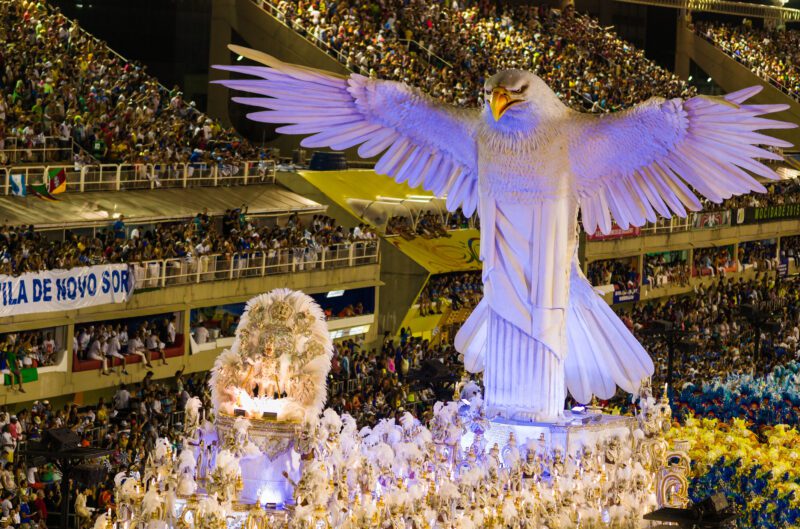
When: Friday before Ash Wednesday (51 days to Easter)
Held at noon on the Friday before Ash Wednesday, the Carnival of Brazil marks the beginning of Lent with a six-day joyous celebration filled with dancing and singing in the streets. The fusion of indigenous, Afro-Brazilian, and European cultures is represented in the incredible costumes and performances seen during the parades.
Activities to try: Carnival of Brazil Teacher Resources from NCMEP
Easter
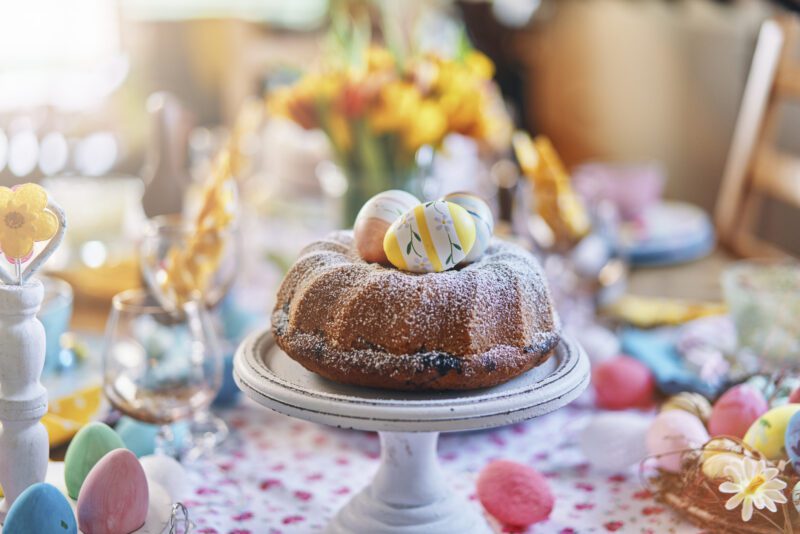
When: March, April
Considered by many to be the holiest holiday for Christians, Easter is observed to mark their belief in the resurrection of Jesus Christ, the founder of the religion. While it’s always held on a Sunday in the United States, the date varies and can fall on any Sunday between March 22 and April 25.
Activities to try: Easter Activities for Kids from Days With Grey
Passover
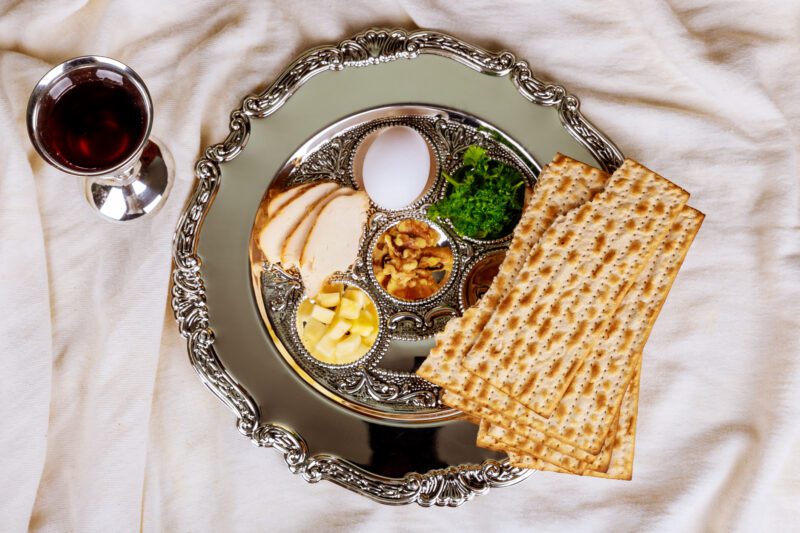
When: March, April
The joyful festival of Passover takes place over about one week in March or April. One of the most well-known holidays around the world, it commemorates the exodus and freedom of the Israelites (Jewish slaves) from Egypt during the reign of the Pharaoh Ramses II. The name comes from ancient Egypt when firstborn children were “passed over” and spared from death. Today, families gather for prayers, songs, and a special meal called a seder, which includes matzo and unleavened bread.
Activities to try: Activities for Celebrating Passover With Kids from Family Education
Ramadan & Eid al-Fitr
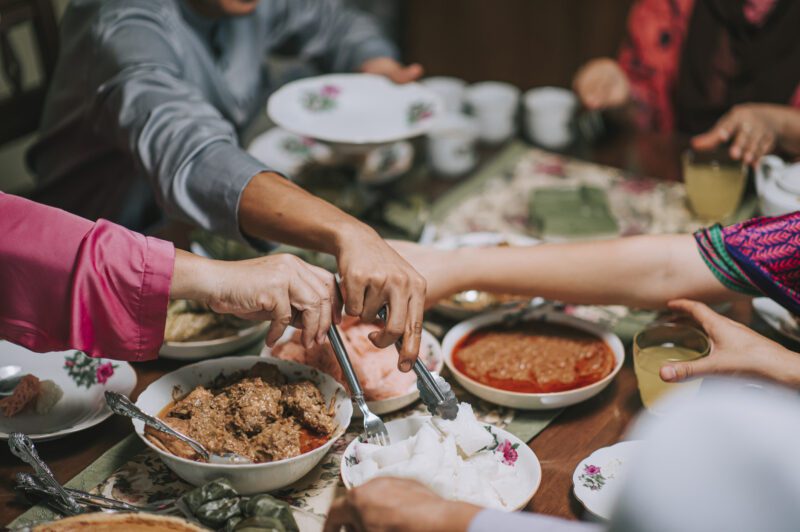
When: 9th month of the Islamic calendar (beginning of March or April)
During the holy month of Ramadan, Muslims pray, read the Koran, and abstain from drinking or eating anything during the day. When evening comes, they break the fast with prayer and festive meals alongside friends and family. Known as iftar, these feasts typically include dates, apricots, sweetened milk, breads, vegetables, and some meats. Observers focus on forgiveness, giving back, and purifying their lives during this sacred time. The holiday Eid al-Fitr translates to “Festival of Fast-Breaking” in Arabic and marks the end of Ramadan.
Watch this: Ramadan from PBS Learning
Beltane

When: May 1
The Gaelic May Day festival, Beltane, is traditionally observed on the first of May and falls between the spring equinox and summer solstice in the northern hemisphere. To celebrate, people adorn their homes with May flowers, make May bushes, light bonfires, visit holy wells, and feast!
Try this: How To Celebrate Beltane With Kids from Kids Connect
Summer Holidays
Midsummer

When: June 24
The vibrancy of summer and the midpoint of the growing season is celebrated in Sweden and other European countries during Midsummer, which is usually observed on June 24 or the weekend closest to this date. Celebrations often begin the night before and include making garlands of fresh flowers, dancing around a tall pole, feasting, and bonfires.
Activities to try: Special Ways To Celebrate Summer Solstice With Kids from Backwoods Mama
Tanabata
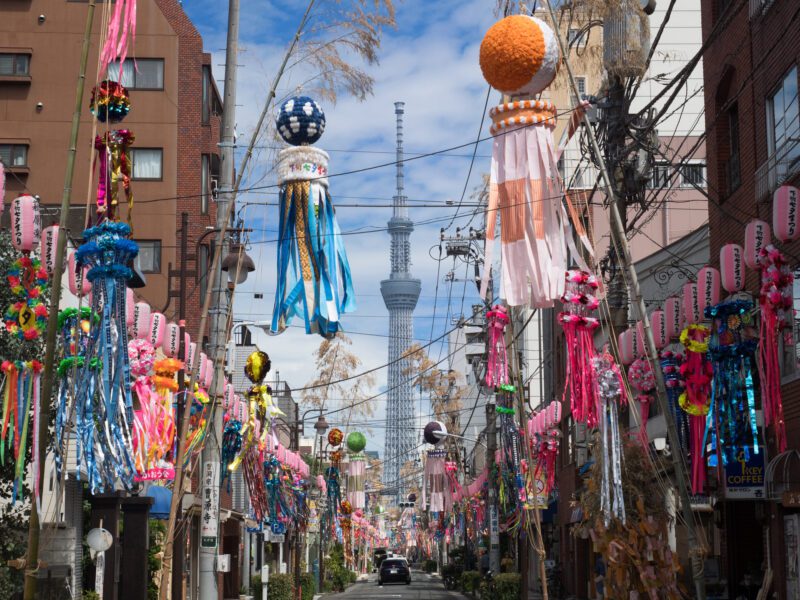
When: July 7
The Star Festival, or Tanabata, traces the legend of the Weaver Star (Vega) and Cowherd Star (Altair), lovers who were tragically separated by the Milky Way but allowed to meet once a year on the seventh day of the seventh month. On this magical day, people write wishes on colored strips of paper and hang them with paper ornaments, praying for their dreams to come true.
Activities to try: Tanabata Craft Activities from About Japan
Bastille Day

When: July 14
Formally called the Fête nationale française or le 14 juillet, Bastille Day is the anniversary of the Storming of Bastille on July 14, 1789. This major moment in the French Revolution brought the people of France together and led to this annual military parade down the Champs-Élysées in Paris.
Activities to try: Fun Bastille Day Craft Activities from Family Holiday
Melon Day
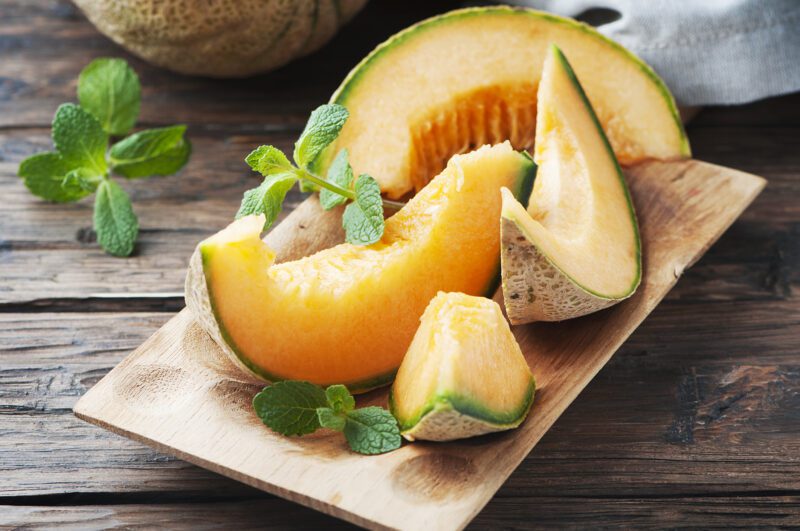
When: August 9
In Turkmenistan, Melon Day is an annual national holiday that takes place on the second Sunday in August to celebrate the Turkmenbashi melon. A crossbreed of the muskmelon, the Turkmenbashi melon is notable due to its size, taste, and incredible aroma.
Try this: You probably won’t find muskmelon, but you can enjoy cantaloupe with students while learning more about how these two melons are similar but different!
Fall Holidays
Chuseok
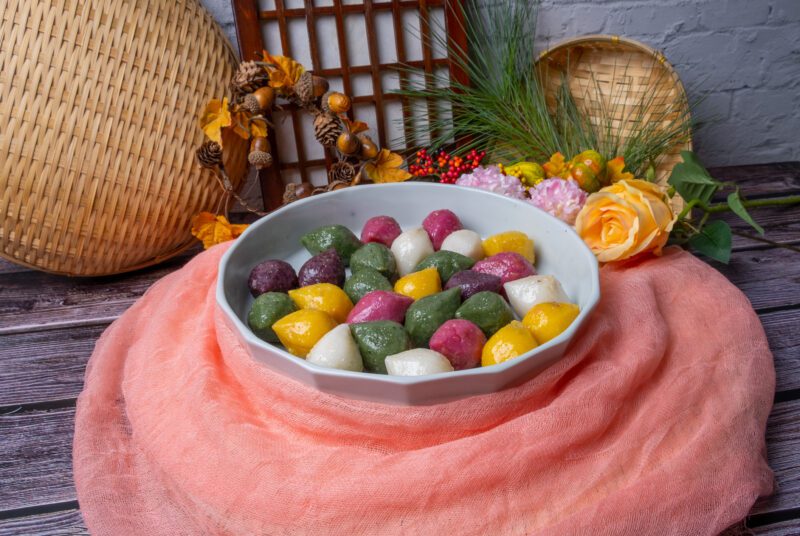
When: 15th day of the 8th month of the Chinese lunar calendar
Referred to by many as Korea’s Thanksgiving, the Chuseok holiday coincides with a full harvest moon. Families gather and spend time together while thanking their ancestors for the harvest. Of course, there is a huge feast including jeon (Korean pancakes) and songpyeon, small rice desserts filled with ingredients such as red beans, sesame seeds, or chestnuts.
Activities to try: Fun Chuseok activities to teach kids about the Korean holiday from Care.com
Yom Kippur

When: September, October
Yom Kippur is the holiest day in Judaism and is marked by prayer and fasting. Observed on the 10th day of the Jewish calendar month Tishri, Yom Kippur is known as the Day of Atonement. It is a day dedicated to the purification of the individual and community. As such, it’s also a day for asking for forgiveness.
Activities to try: Yom Kippur for Kids: Activities and Teaching Resources from Kids Connect
Diwali
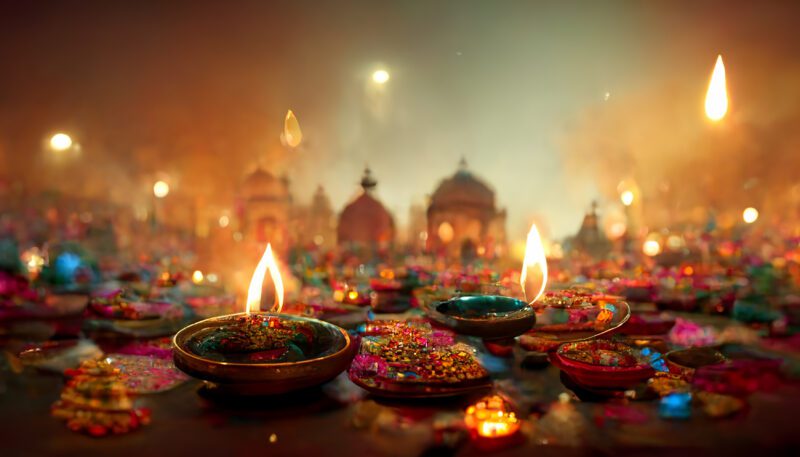
When: Between mid-October and mid-November
Observed in India each fall, Diwali is a time for celebrating the triumph of good over evil, light over darkness, and our incredible ability to overcome life’s many challenges. During this five-day festival of lights, you’ll see clay diya lamps in windows and gorgeous rangoli welcome mats marking the very special occasion. The third day of festivities includes a huge feast where people enjoy paneer, samosas, and more!
Activities to try: Easy Diwali Crafts for Kids from Happy Toddler Playtime
Halloween
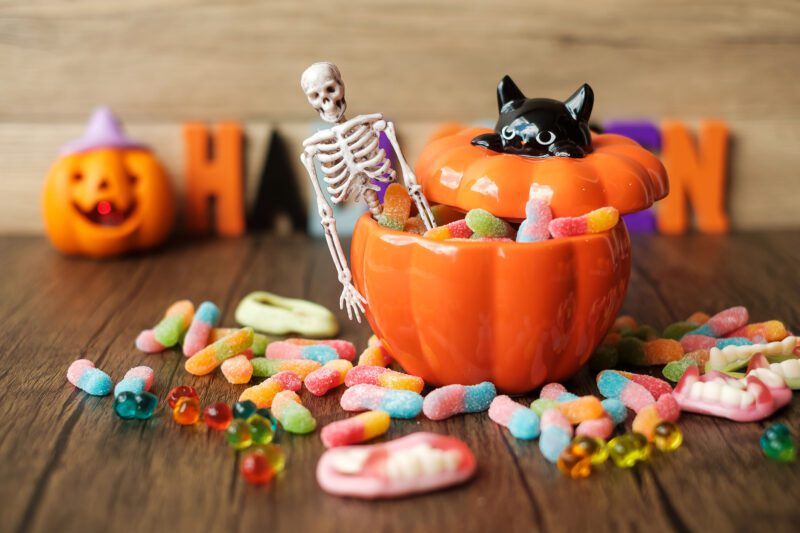
When: October 31
The origins of Halloween can be traced back to practices by the Pagans and Christians, but it gradually evolved into a non-religious celebration. Today, it’s one of the most popular holidays, celebrated around the world by dressing up in costumes, carving jack-o’-lanterns, trick-or-treating (going door-to-door to ask for candy), and watching spooky movies.
Activities to try: Fantastic Halloween Activities, Crafts, and Games from WeAreTeachers
Día de los Muertos

When: Traditionally November 1 and 2
With origins in Aztec culture, Día de los Muertos is a vibrant and colorful way to honor the dead. An ofrenda is made by each family in their homes to honor and remember their ancestors, enjoy gatherings, and decorate with bright marigolds and papel picado banners. Día de los Muertos is a holiday that’s widely celebrated in Mexico, but it’s also celebrated around the world, especially by people of Mexican heritage.
Try this: Day of the Dead Activities for Kids from Home School Super Freak (and watch the movie Coco!)
If you liked this article about holidays around the world, check out our Big List of Holidays and Days To Celebrate at School.
Plus, for more articles like this one, sign up for our newsletters.

